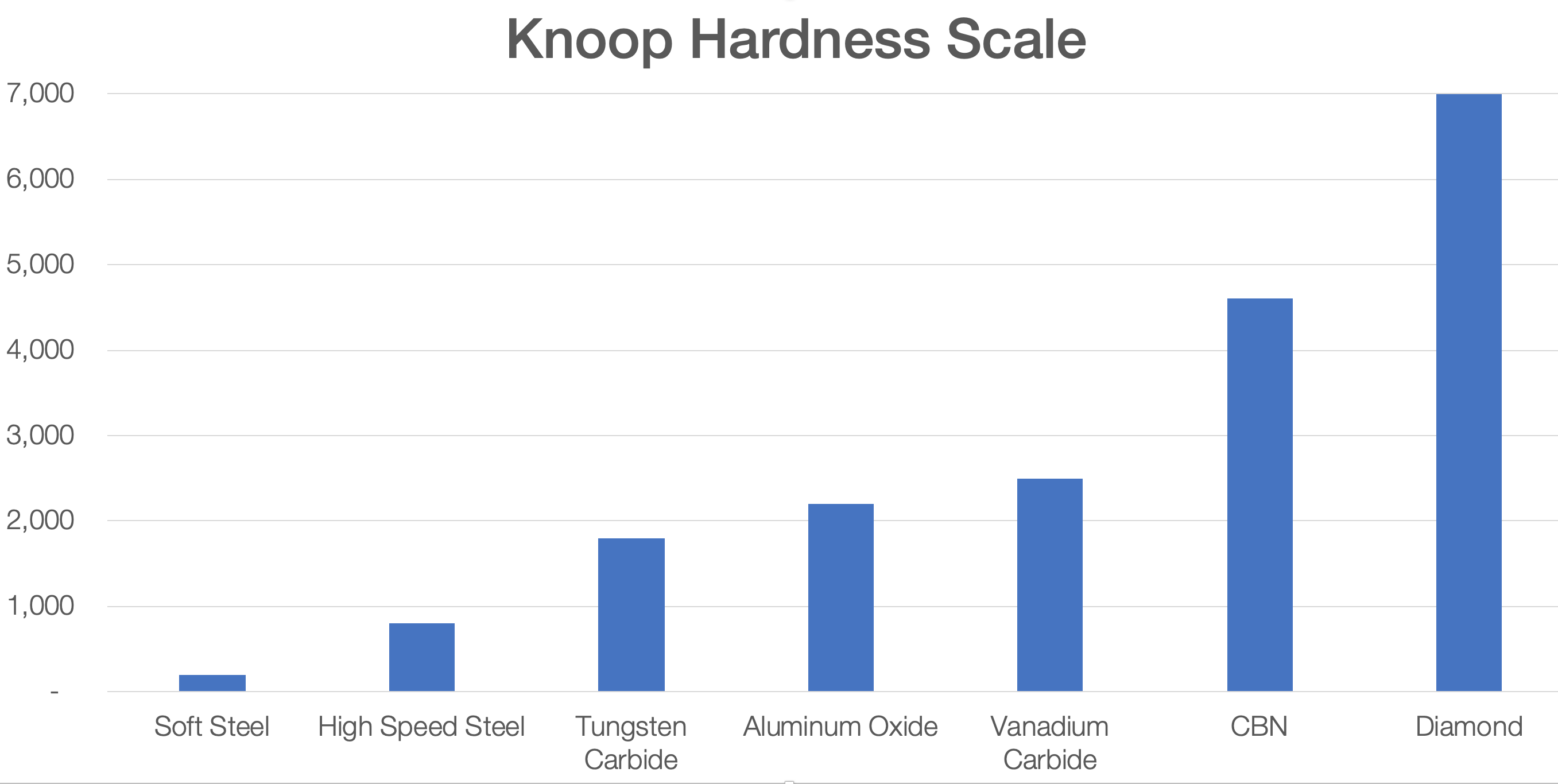|
Grinding Media Compared
|
Tormek Grindstones
60-100 RPM
|
- It is very easy to use the stone grader to go from a coarser grit to a finer one, and the sharpener does not have to change the grindstone. In turning, this is something done often. It is common to rough turn using the coarse grit, and change to a finer grit as the turner approaches the final shape (for softer woods, the sharpener may even hone the edge). Being able to use the stone grader is faster as the sharpener don't have to swap stones.
- This is especially useful when changing which tool the wood turner is using (this is very common with my turning approach on the lathe). Some tools, like the spindle roughing gouge are fine when using the coarse grit, whilst others like the parting tools greatly benefit from a finer grit.
- The finer graded SB grindstone seems to produce about the same surface as the DF (fine) diamond wheel or possibly even the DE (extra fine) diamond wheel.
- The SJ stone gives a better finish than the EF stone.
- If the sharpener gets too aggressive, the surface can be fixed using the truing tool.
- There is no need to mess around with special water additives.
- This approach is cheaper in the short term.
- Use of water cooling contains the release of grinding detritus into the air.
- In summary, the traditional grindstones seem great for hobbyist sharpening.
|
Tormek Diamond Wheels
60-100 RPM
|
- When reshaping a tool, the coarse diamond wheel works well, even on tough metals. It is probably a better choice than using the same jig on a traditional, high-speed grinder (via the BGM-100). Indeed, I found I was able to easily clean up some past grinds (that were functional, but not that pretty).
- Swapping out the coarse diamond wheel for the finer ones keeps the shape consistent across the grind (makes the grind nicer looking on tools with large bevels, especially tools like skews -- though it doesn't necessarily make it cut better).
- Moving between wheels is convenient as the sharpener does not have to re-adjust the universal support bar when grinding a tool with finer grits.
- Unlike CBN wheels, these can be used for sharpening high carbon steels.
- They are probably cheaper in the long run.
- Use of water cooling contains the release of grinding detritus into the air.
- Dr. Vadim Kraichuk with KnifeGrinders published this comparison of Diamonds vs. CBN Wheels.
- Tormek put together this overview on Diamond Wheel Sharpening. It is a good summary.
|
CBN Wheels
1,500+ RPM
|
- When reshaping a tool, the coarse CBN wheels works well, even on tough metals. The Tormek BGM-100 can be used to accommodate Tormek jigs with these wheels.
- Swapping out the coarse CBN wheel for the finer ones keeps the shape consistent across the grind (makes the grind nicer looking on tools with large bevels, especially tools like skews -- though it doesn't necessarily make it cut better). However, I have not encountered sharpeners who swap out CBN wheels; instead, when they have multiple CBN wheels , one is put on each end of the grinder.
- Use of CBN wheels on high speed grinders does release grinding detritus into the air. Some consider this a safety hazard, and this airborne material is certainly a concern for metal-working shops.
- CBN wheels last a long time, and it is commonly believed that CBN wheels are probably cheaper in the long run.
- Dr. Vadim Kraichuk with KnifeGrinders published this comparison of Diamonds vs. CBN Wheels. This is especially important as it regards using CBN grindstones at slower speeds on the Tormek. (Aside: KnifeGrinders sells CBN wheels specially designed for the Tormek.)
|
Traditional, Friable Grindwheels
1,500+ RPM
|
- When reshaping a tool, a coarse wheel works well, even on tough metals. The
Tormek BGM-100 can be used to accommodate Tormek jigs with these wheels.
- Use of friable grindwheels on high speed grinders releases grinding detritus into the air. Some consider this a safety hazard, and this airborne material is certainly a concern for metal-working shops.
- Heat management is critical when using these grindstones.
- Truing the grindstone is required fairly often.
- This is typically the way many start due to the cost effectiveness.
|


